



.jpg)
Quat Dong Embroidery VillageAddress: Quat Dong Village, Quat Dong commune, Thuong Tin district, Hanoi Products: Embroidered productsWhenever talking about Vietnamese traditional embroidery, people often mention to Quat Dong - ancestor of the embroidery with all the respect and pride. With...
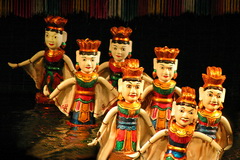
Dans ce théâtre célèbre pour sa scène sur l'eau, les poupées en bois sculptées à la main et les dragons colorés donnent vie aux légendes locales.Fondé en 1969, le théâtre de marionnettes sur l'eau de...
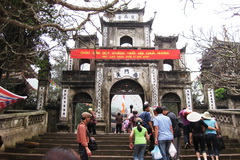
Approximately 70 kilometers southwest of Ha Noi, Huong Son boasts quite a few pagodas built in the Posterior Le Dynasty. Until the beginning of the 20th century, there have over 100 pagodas. Visitors can go to Huong Son via the Ha Dong - Van Dinh route.Vietnamese or foreigners alike wish to come...
.jpg)
Tour du drapeau, bombardiers ennemis détruits, photos et armes des guerres contre la Chine, la France et les États-Unis : plongez dans le passé tumultueux du pays.Dans le centre de Hanoi, le Musée d'histoire militaire du Vietnam présente les guerres...
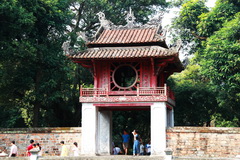
Le temple de la Littérature (vietnamien: Văn Miếu-Quốc Tử Giám), ou sanctuaire du Prince propagateur des Lettres est un temple confucéen situé dans la partie ouest de la vieille ville d'Hanoï, capitale du Viêt Nam. C'est le plus important des...
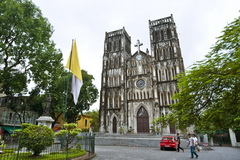
La cathédrale Saint-Joseph (Nha Tho Lon) à Hanoï, capitale du Viêt Nam, fut construite en 1886 par les Français sous l'épiscopat de Mgr Paul-François Puginier (1835-1892). Elle est de style néogothique. C'est...
.jpg)
Ha Thai Lacquer-ware VillageAddress: Ha Thai village, Duyen Thai commune, Thuong Tin district, Hanoi.Products: Lacquer painting productsHa Thai village – Duyen Thai commune is located right by side of 1A national highway and among other famous trade villages. Ha Thai village’s lacquer...
.jpg)
Cu Da Vermicelli VillageAddress: Cu Da village, Cu Khe, Thanh Oai district, Hanoi.Products: handmade vermicelli of dong rice powder.Just 20km from busy downtown Hanoi lies Cu Da Vermicelli Village, long known for its vermicelli noodles. Lying beside the calm Nhue River, Cu Da Village is a lovely...
.jpg)
Ba Vi National Park is centred on Mount Ba Vi, a mountain isolate situated about 50 km west of Hanoi. The mountain rises steeply out of a plain that rarely exceeds 30 m in elevation. In general, slopes on the western side of Ba Vi mountain, at an average of 25°, are steeper than those on the...
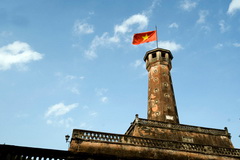
Hanoi Flag Tower at the age of nearly 200 years is renowned as one of the symbols of Hanoi. The construction began in 1805 and completed in 1812, the 11th year of Gia Long time, Nguyen dynasty, five years after construction time of Flag Tower in Hue.From 1894 to 1897, the French colonial...

Soyez le premier à connaître nos offres de voyage exclusives et les nouveaux circuits !.